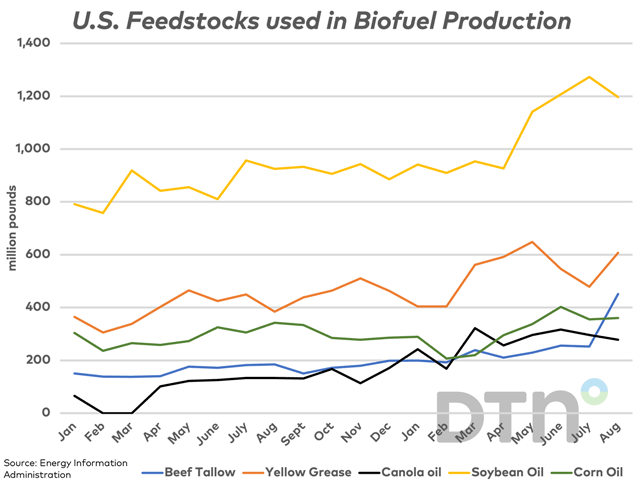
Monthly U.S. feedstock use for biofuel production shows canola oil losing share against competing feedstocks.

Monthly U.S. feedstock use for biofuel production shows canola oil losing share against competing feedstocks.
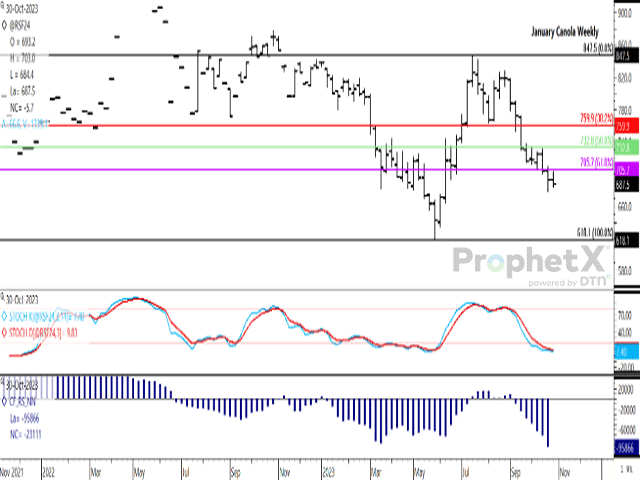
Noncommercial traders increased their bearish net-short position in canola for a sixth week as of Oct. 24, now holding a record bearish position.
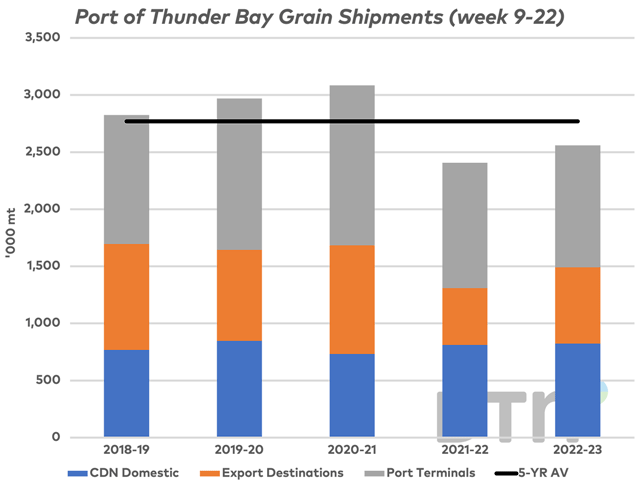
The two sides in the seaway strike are in talks today, with federal government involvement. Movement from Thunder Bay terminals normally totals close to 1 mmt/month over the final months of the year.
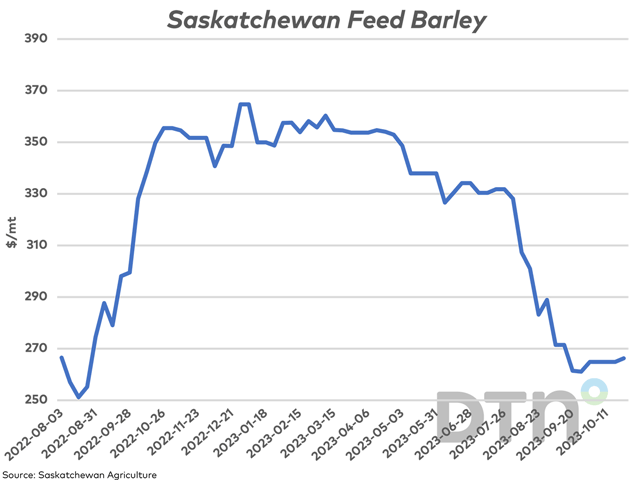
Final crop reports from the three prairie provinces shows estimated barley yields higher than the official Statistics Canada estimates, while there are signs that the reliance on imported corn may be below expectations.
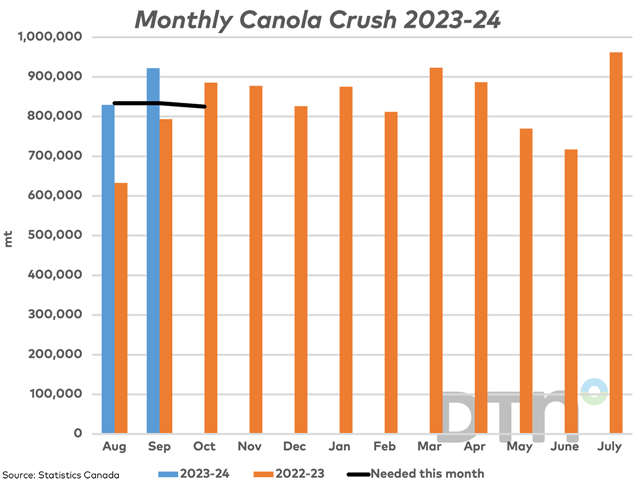
Canada's canola crush after two months is seen at the fastest pace on record, while the September soybean crush was the largest September crush seen in seven years.
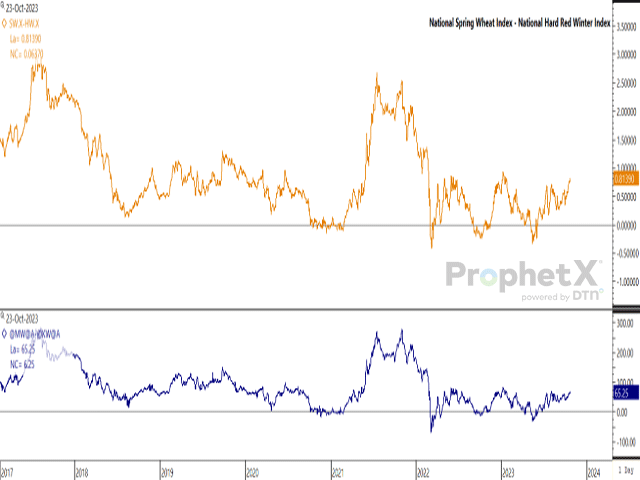
The cash market spread between the National Spring Wheat Index and the National HRW Index in the U.S. has more than doubled this month and bears watching.
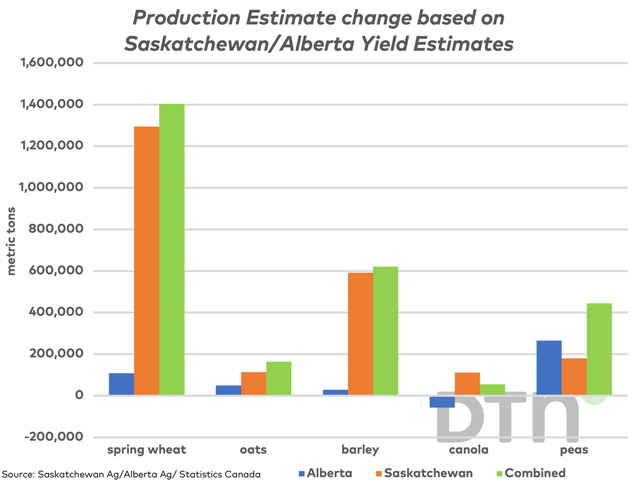
Yield estimates reported in both the Saskatchewan and the Alberta Crop Reports signal the potential for upward revisions when Statistics Canada reports next in December.
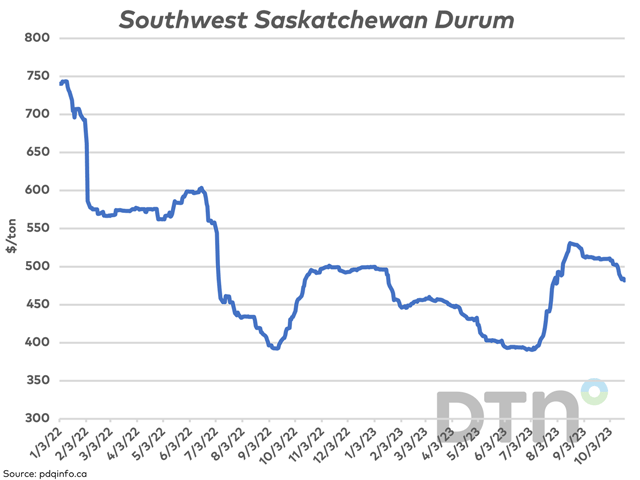
Durum bids for Southwest Saskatchewan have retraced to levels last seen in early August, or the first two days of the crop year. This month's International Grains Council report may put a rally in prices even further out of reach.
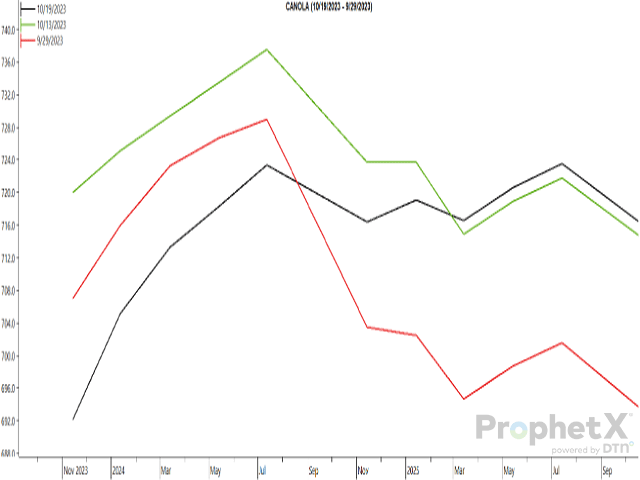
Canola's forward curve has shown weakness over recent weeks following the bearish close of Oct. 19, while supportive signals remain.
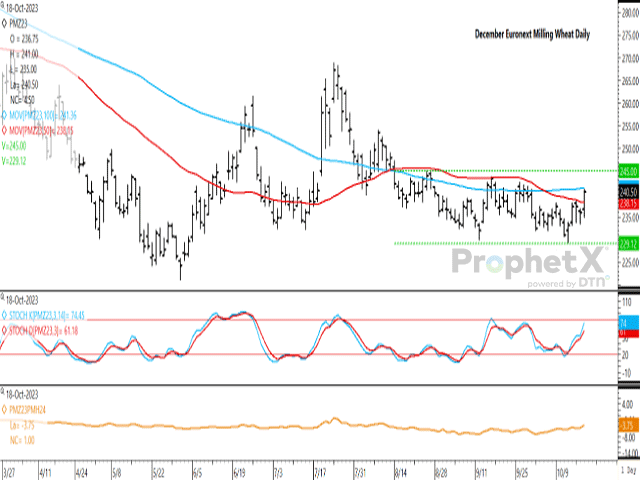
European milling wheat for December delivery is nearing the upper-end of the range traded during the past two months, close to a test of its 100-day moving average.
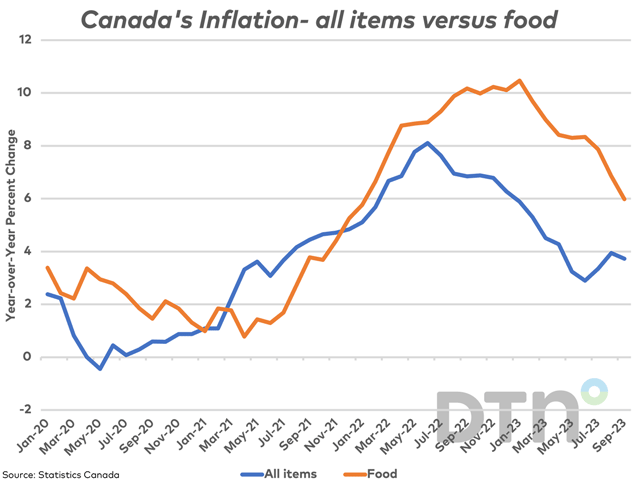
Canada's inflation rate for all items fell in September, while food inflation fell at faster pace, reported at the lowest pace since January 2022.
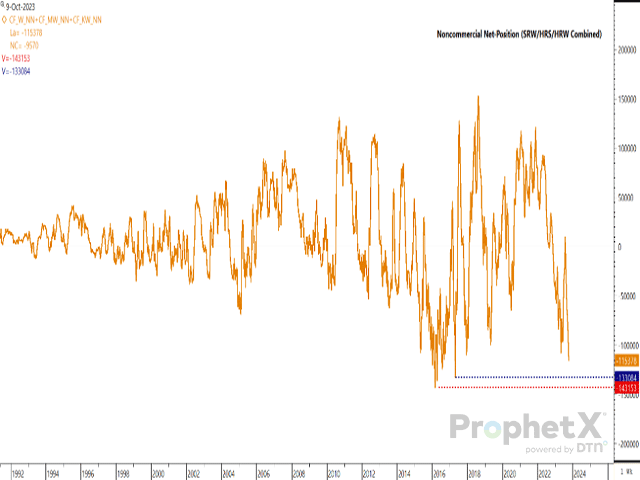
CFTC's weekly data shows the combined net-positions for HRW, HRS and SRW moving from a bullish net-long position in late July to a bearish net-short one a week later, with this bearish position growing in size for 10 consecutive weeks.
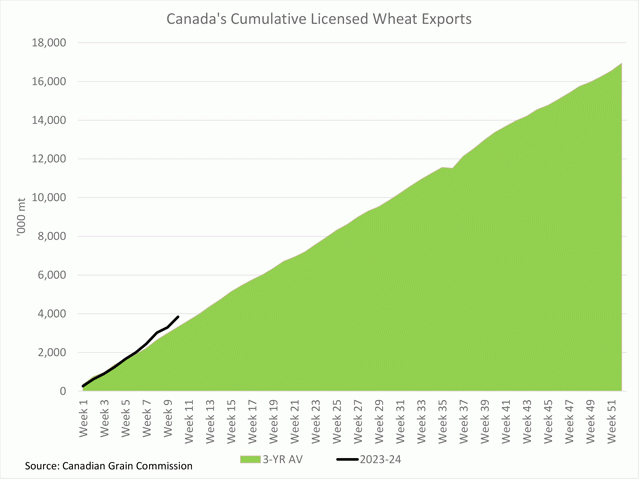
The Canadian Grain Commission has reported large weekly shipments of wheat from licensed facilities in two of the past three weeks. Cumulative shipments are higher than average, while ahead of the pace needed to reach the current AAFC forecast.
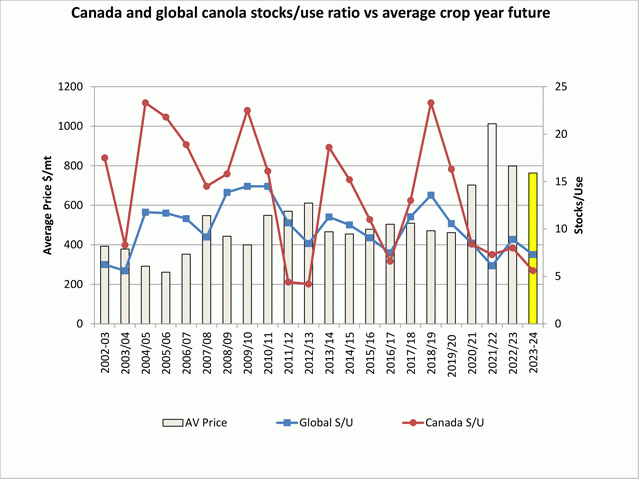
The USDA made few significant changes to their estimates for global canola/rapeseed in October, while their ending stocks estimate remains well above the current International Grains Council estimate and bears watching.
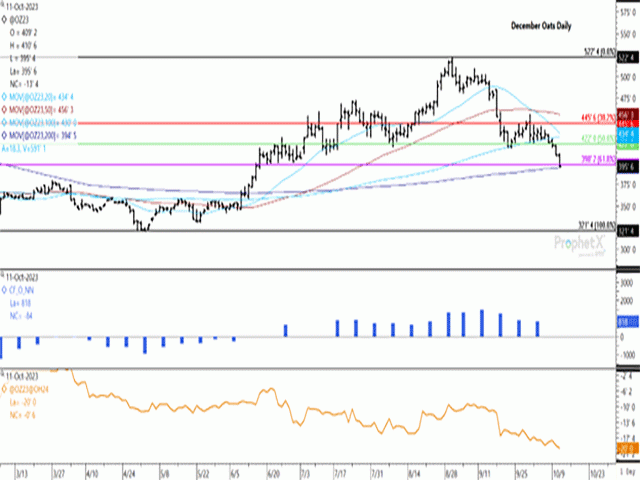
December oat futures closed under pressure for a fourth session, ahead of an expected bearish USDA data release.
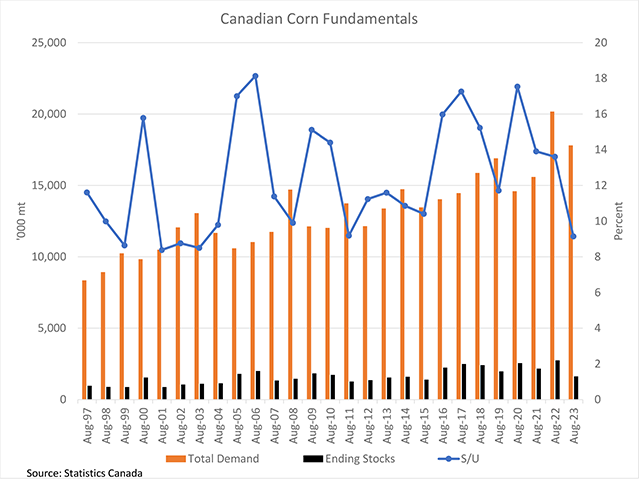
Statistics Canada released its ending stocks estimates for both corn and soybeans as of Aug. 31, while updating data in the supply and disposition tables.
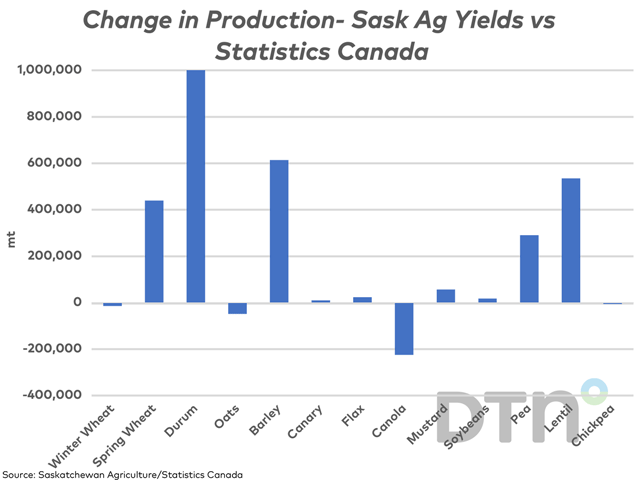
Saskatchewan Agriculture updated its provincial yield estimates for select crops this week, which may signal a larger crop than seen in official estimates.
This study looks at select crop and crop product trade data for August, 2023, the first month of the 2023-24 crop year for most crops.
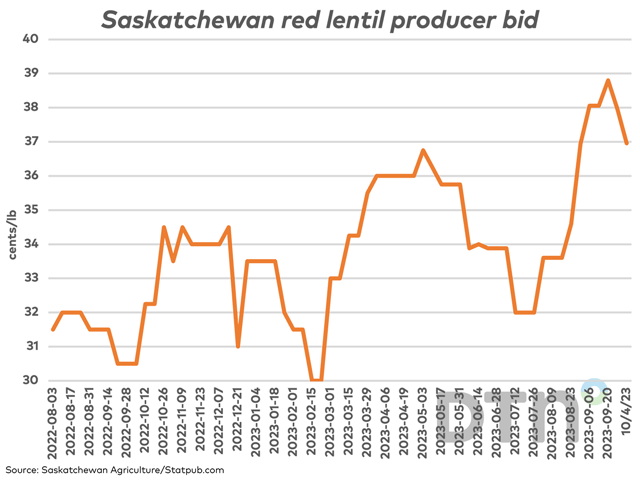
India has continued to escalate its actions against Canada, while the red lentil bid shows signs of weakness.
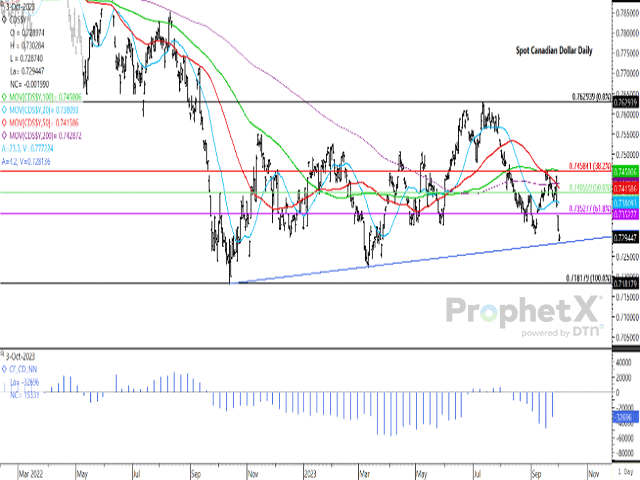
The Canadian dollar has faced heavy pressure in recent trade, while poised to test a long-term trendline.
DIM[2x3] LBL[blogs-canada-markets-list] SEL[[data-native-ad-target=articleList]] IDX[2] TMPL[news] T[]
DIM[2x3] LBL[blogs-canada-markets-list-2] SEL[[data-native-ad-target=articleList]] IDX[5] TMPL[news] T[]